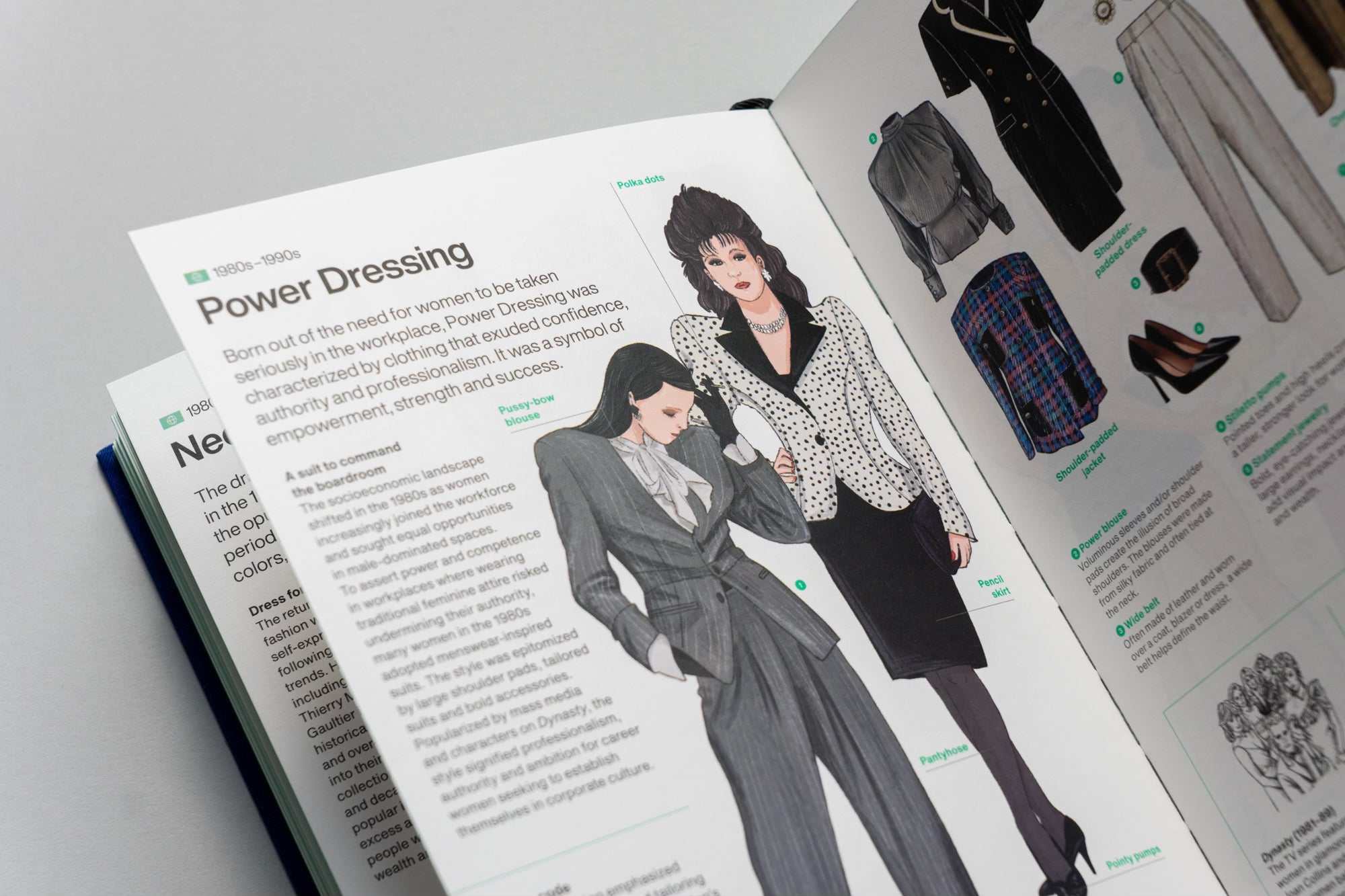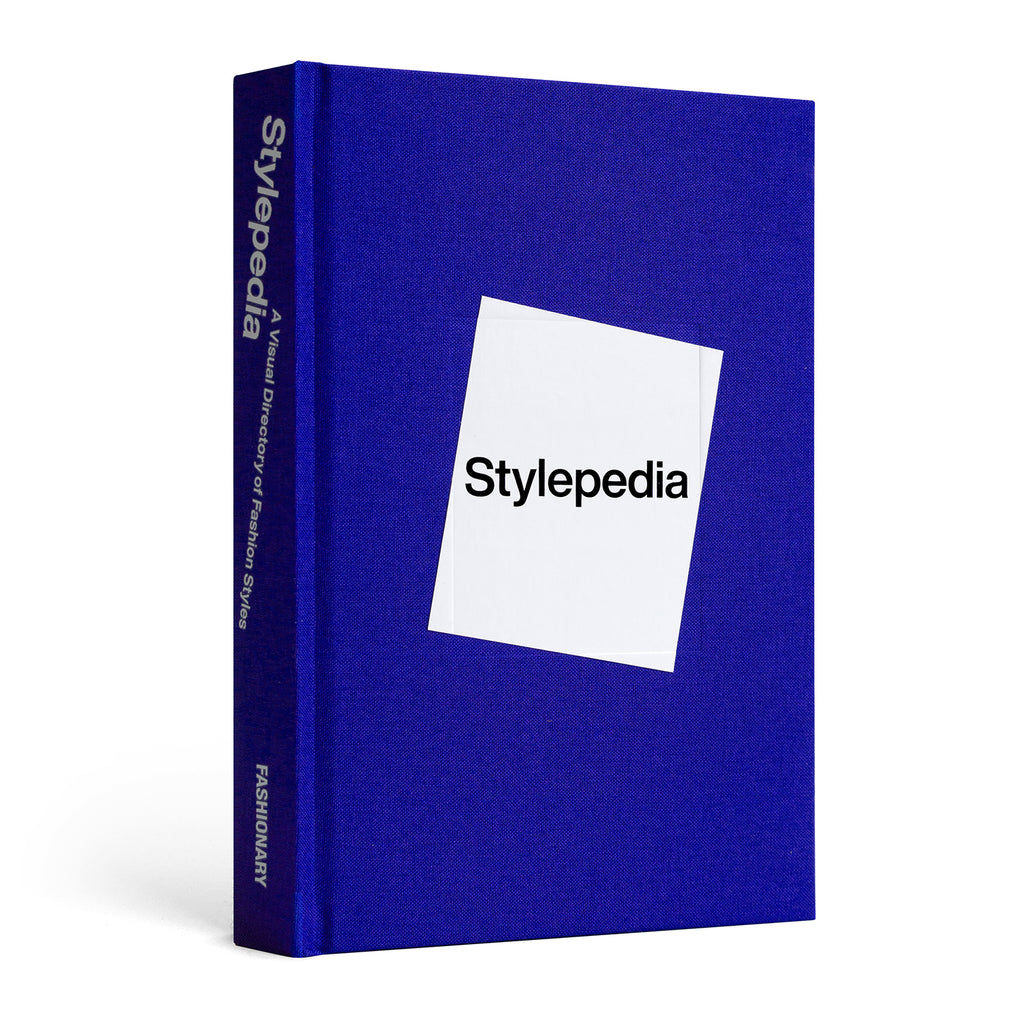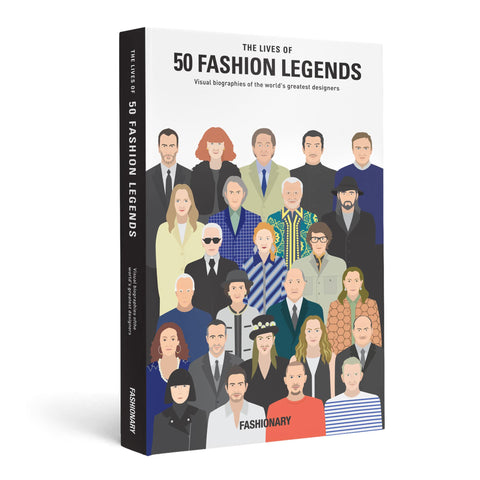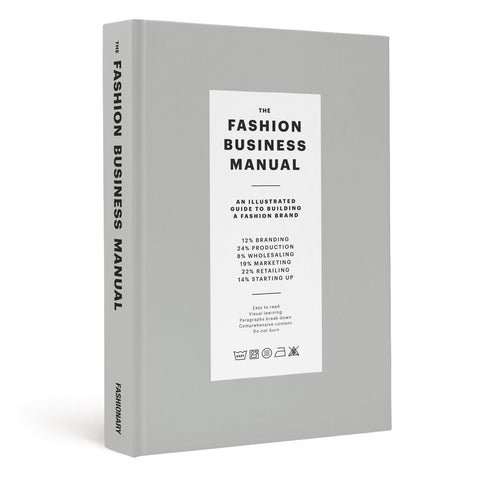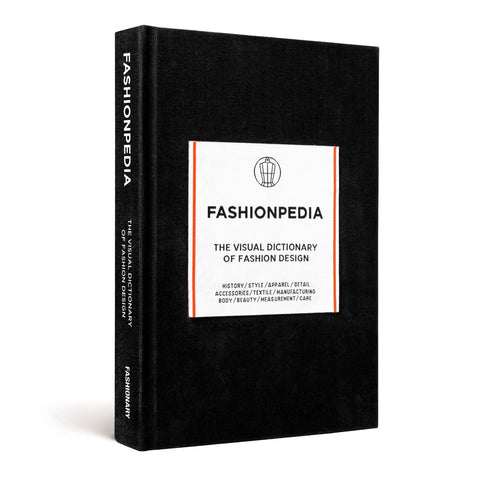- An encyclopedia of styles and subcultures of the past 100 years.
- Delve into stories of origins, cultures, and fashion elements of each style.
- Over 1200 illustrations provide instant insight into every style.
Stylepedia
Discounted Express Shipping over $70.00
- Size: 14cm (W) x 21cm (H) x 2.8cm (D)
- Page: 224
- Paper: 158 gsm Premium Paper
- Weight: 0.6kg
- Cover: Hard-cover
overview
100 Years of Styles & Subcultures
STYLEPEDIA uncovers global styles, exploring their origins, distinct features, and the cultural and historical contexts that shaped them. From historical trends to the latest buzz on social media, it is your essential guide, providing the knowledge and inspiration needed to understand different styles at their core.

Style Directory
From Major Trends
The book addresses the key trends that have defined global fashion, ranging from the 1920s Flappers, the New Look, Ivy League style, Hip Hop culture, to the Y2K era. It offers a comprehensive understanding of the fashion evolution over the past century.


To Lesser Known Subcultures
The book explores lesser-known subcultures that played a significant role in shaping the evolution of fashion. From Pachuchos and Beatniks, to Bogans, Takenoku Zoku, Sapeurs and Riot Grrrls, it uncovers the hidden influencers in the world of style.


THE CHAPTERS
Chapter 1 - The Modern Era
The early 20th century, a period of rapid modernization and social change, was marked by prosperity and optimism. Despite the economic hardship of the Great Depression, cultural milestones like the rise of jazz, women’s suffrage, and the golden age of Hollywood offered glimmers of hope and innovation amid adversity.

Chapter 2 - Transformation through War
World War II significantly reshaped fashion and style. The practical needs of wartime gave rise to new, functional trends, while the post-war period saw a surge in alternative subcultures and a return to luxury. The era left a lasting impact, fostering a future fashion landscape that was more casual, practical and diverse.

Chapter 3 - Teen Power
Post-war prosperity birthed a distinct culture of teenagers, who were eager to differentiate themselves from their parents. Influenced by mass consumerism and entertainment, they began experimenting with fashion and subcultures as a form of rebellion and identity-seeking. This pivotal shift positioned teens as influential cultural catalysts, forever reshaping the landscapes of fashion and society.

Chapter 4 - The Swinging Sixties
The 1960s were a youth-centric era of optimism driven by technological advancements and economic prosperity. Art and fashion mirrored this daring and playful spirit, serving as significant reflections of this dynamic era. Concurrently, the surge in well-educated youth emerged as a transformative societal force. Their heightened social conscience paved the way for significant political movements.

Chapter 5 - Blossoming Revolution
Amid the tumult of the Vietnam War and the civil-rights movement, “flower power” emerged as a potent symbol of peace, unity and diversity. It intertwined fashion and sociopolitical advocacy, rejecting mainstream norms and championing inclusivity. Aligning style with civil-rights aspirations, the movement catalyzed societal shifts toward greater equity and diversity.

Chapter 6 - The Neon Era
The Neon Era, synonymous with the 1980s, was characterized by vibrant, over-the-top fashion mirroring the decade’s materialism and burgeoning economic confidence. This period, marked by the mantra “greed is good,” saw an explosion of individualistic expressions in fashion and subcultures, encapsulating the era’s cultural shifts and economic exuberance.

Chapter 7 - Alternative Goes Mainstream
Marked by the end of the Cold War and the dawn of the digital age, the 1990s ushered in a dramatic transformation in fashion. The era saw a shift toward alternative styles, the mass adoption of trends fueled by celebrity culture, and a mainstream integration of street-inspired fashion, reflecting the decade’s dynamic socio-cultural shifts.

Chapter 8 - Dot-Com Era
Marked by new-millennium optimism, the 2000s brought a playful, experimental shift in fashion and subculture. The rise of the internet democratized fashion, facilitating the exchange of styles and trends, and making them instantly accessible via online platforms and social media. The result was a truly global fashion culture.

Chapter 9 - Flash Fashion
In the era of smartphones and social media, trends became short-lived “vibes” and microtrends emerged rapidly, no longer dictated by large brands but shaped by an interconnected online community. This shift, reflective of rapid technological progress, marked the dawn of truly participatory fashion.

Details
Extensive Coverage
This book delves into the realm of style and fashion, examining how they shape and are shaped by the social, political and economic contexts in which they exist. It explores iconic styles and their origins and characteristics, tracing the threads that connect them to wider cultural narratives.


Stories
Understanding the Stories behind the Styles
Style extends beyond mere visual appeal; it represents the deliberate choices individuals make to express themselves in their interactions with the world. Our objective is to provide you with key events related to these styles for an enriched understanding.







With over 1200+ Illustrations
We have broken down the extensive information into visual components for easy comprehension. In this book, over 1200 illustrations have been created to provide immediate insight into the essence of each style.


Gallery





